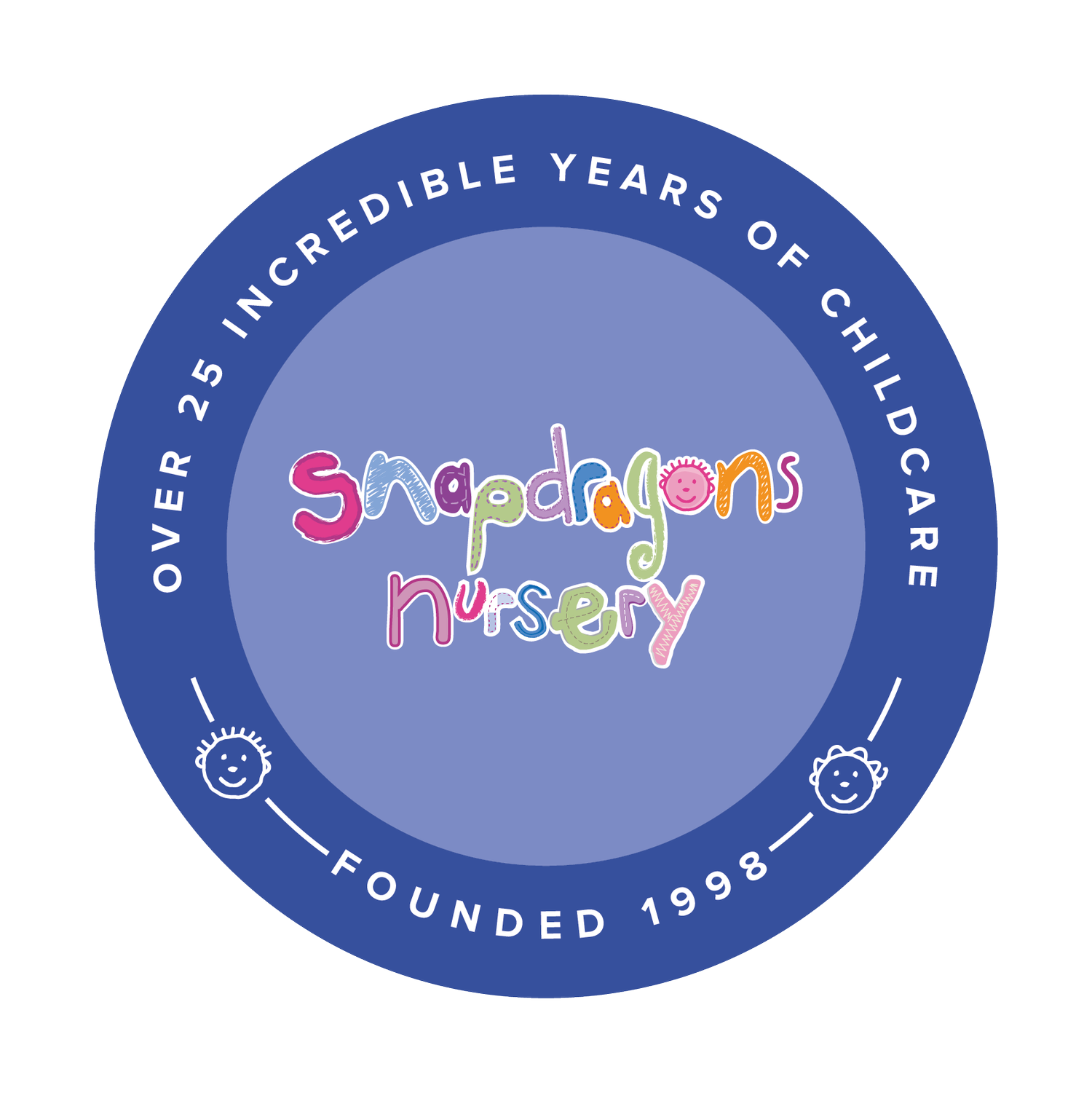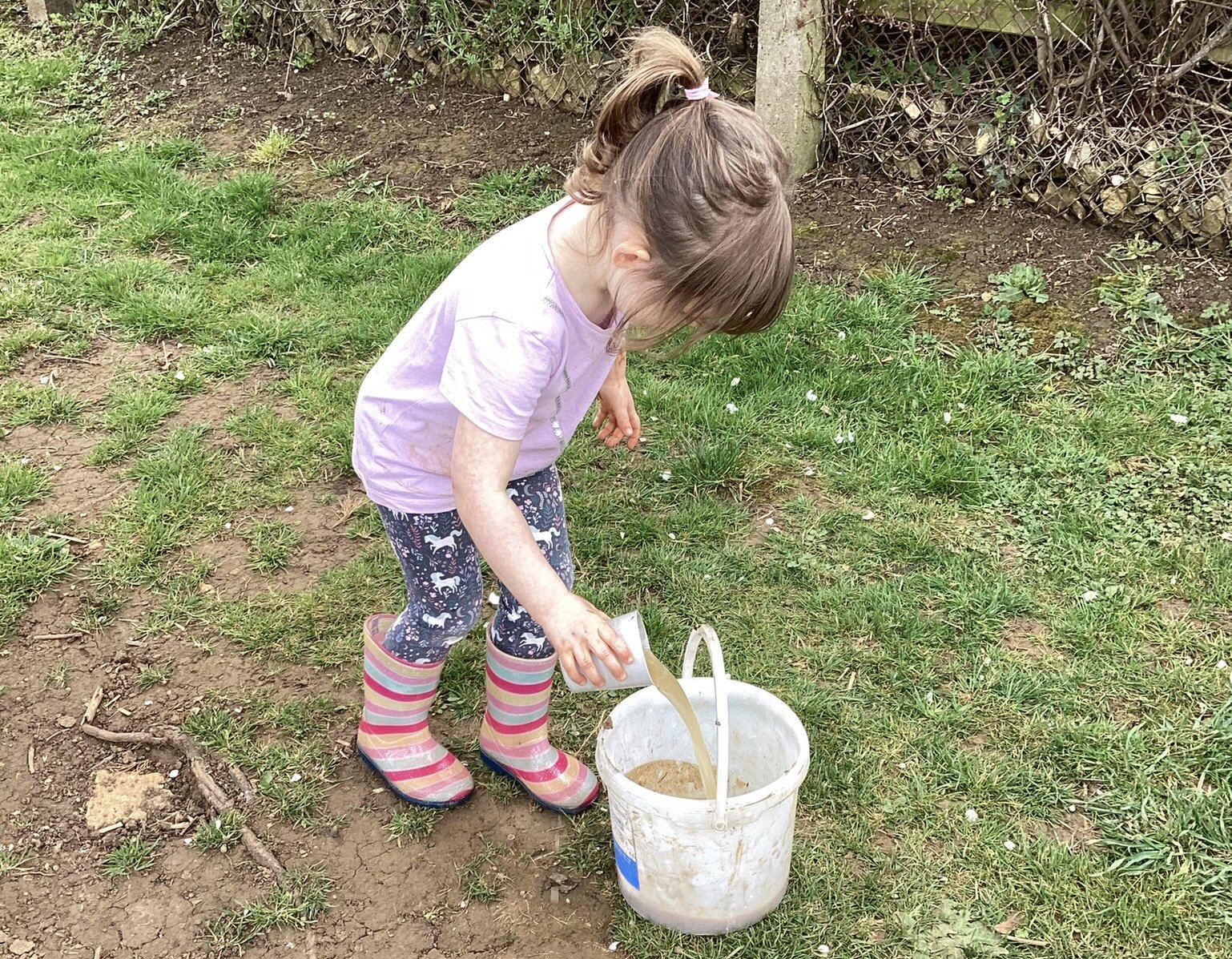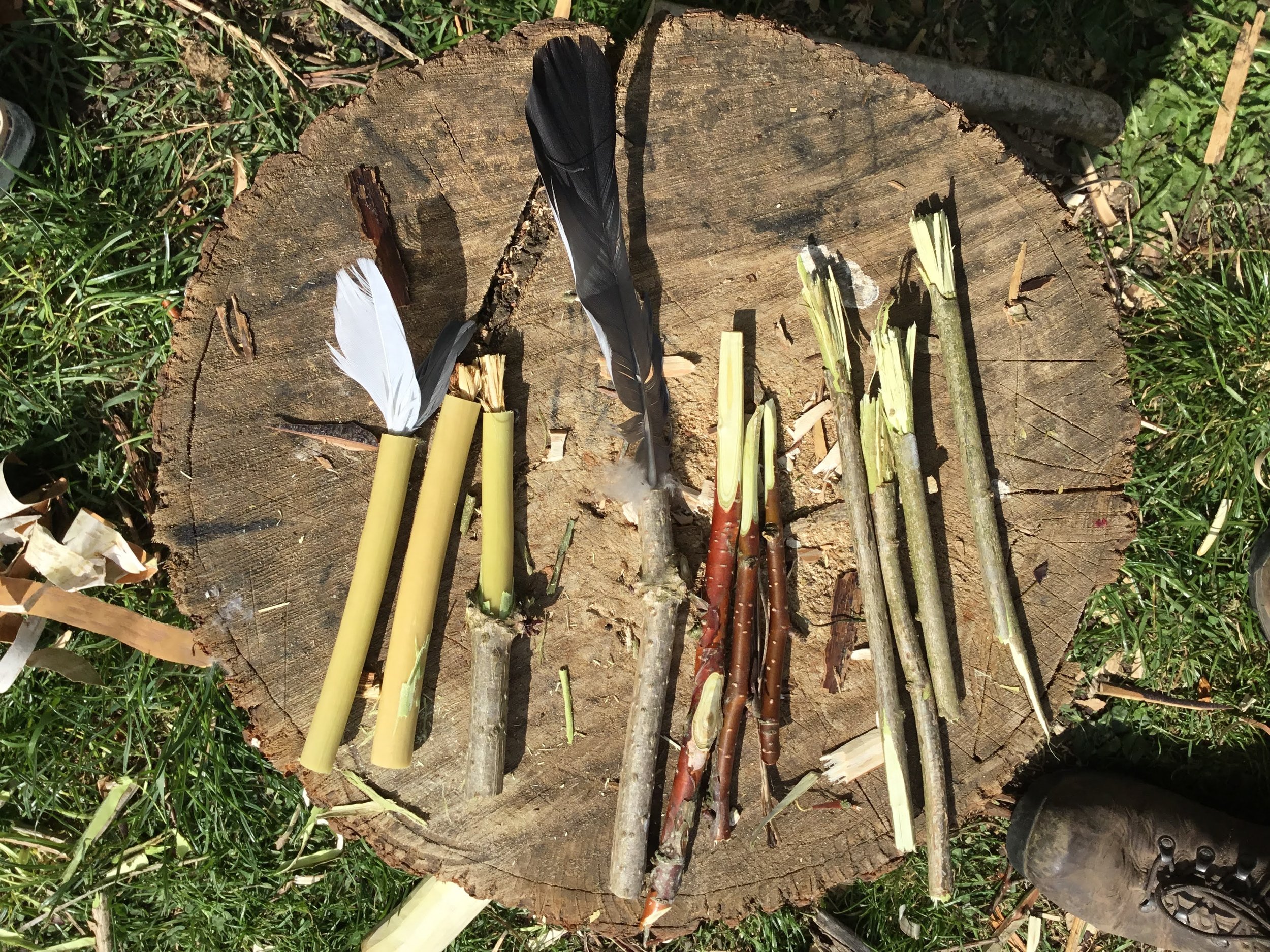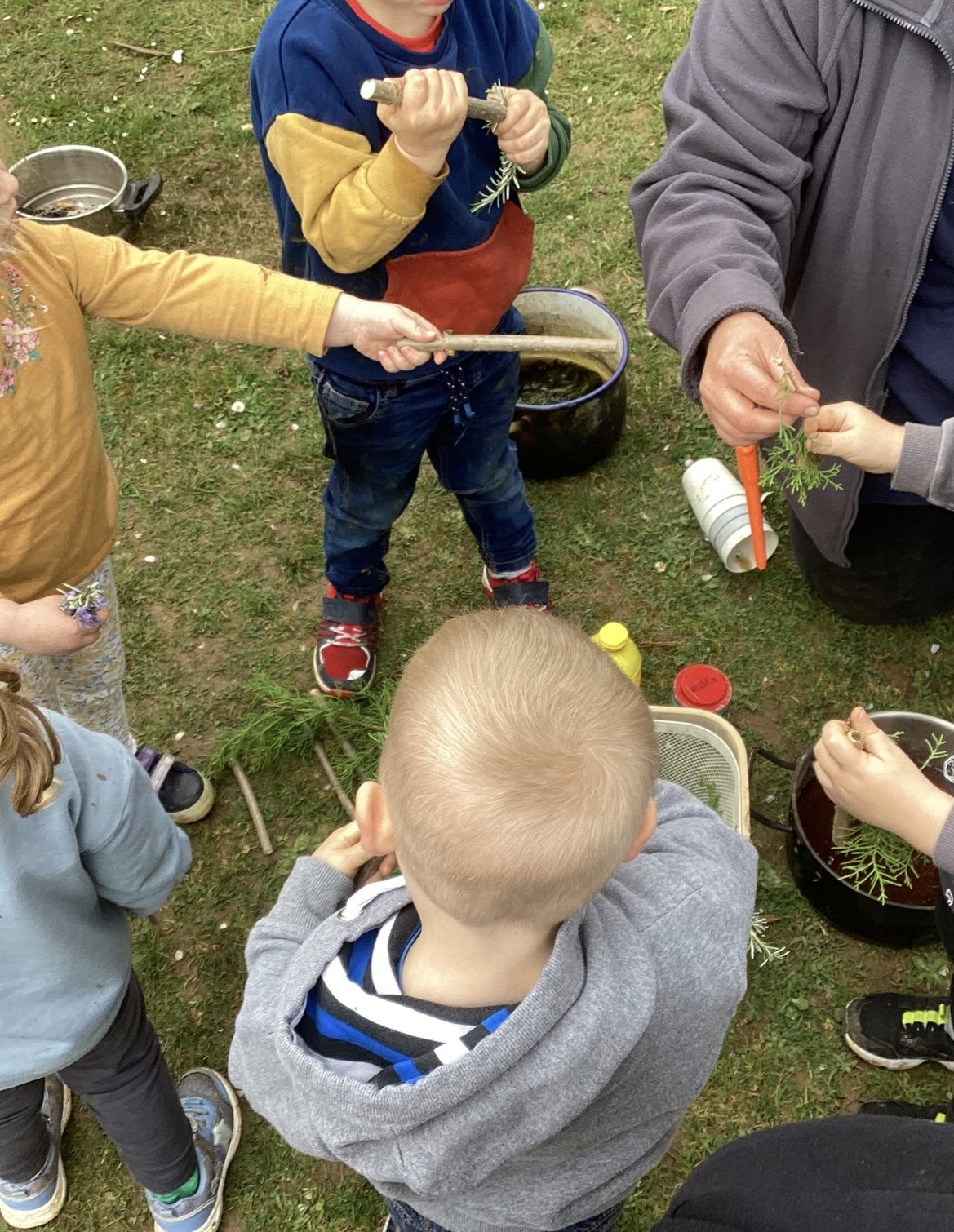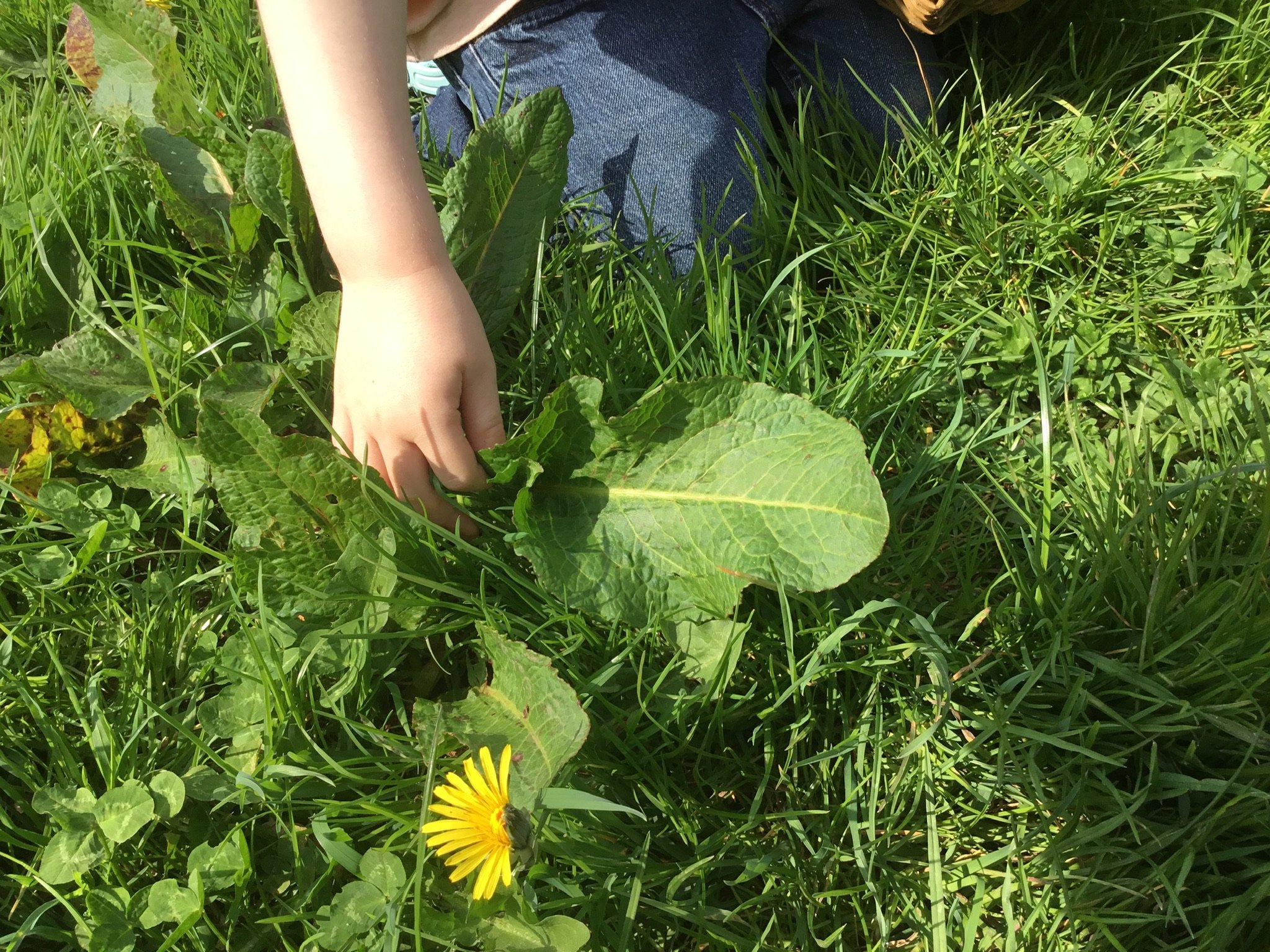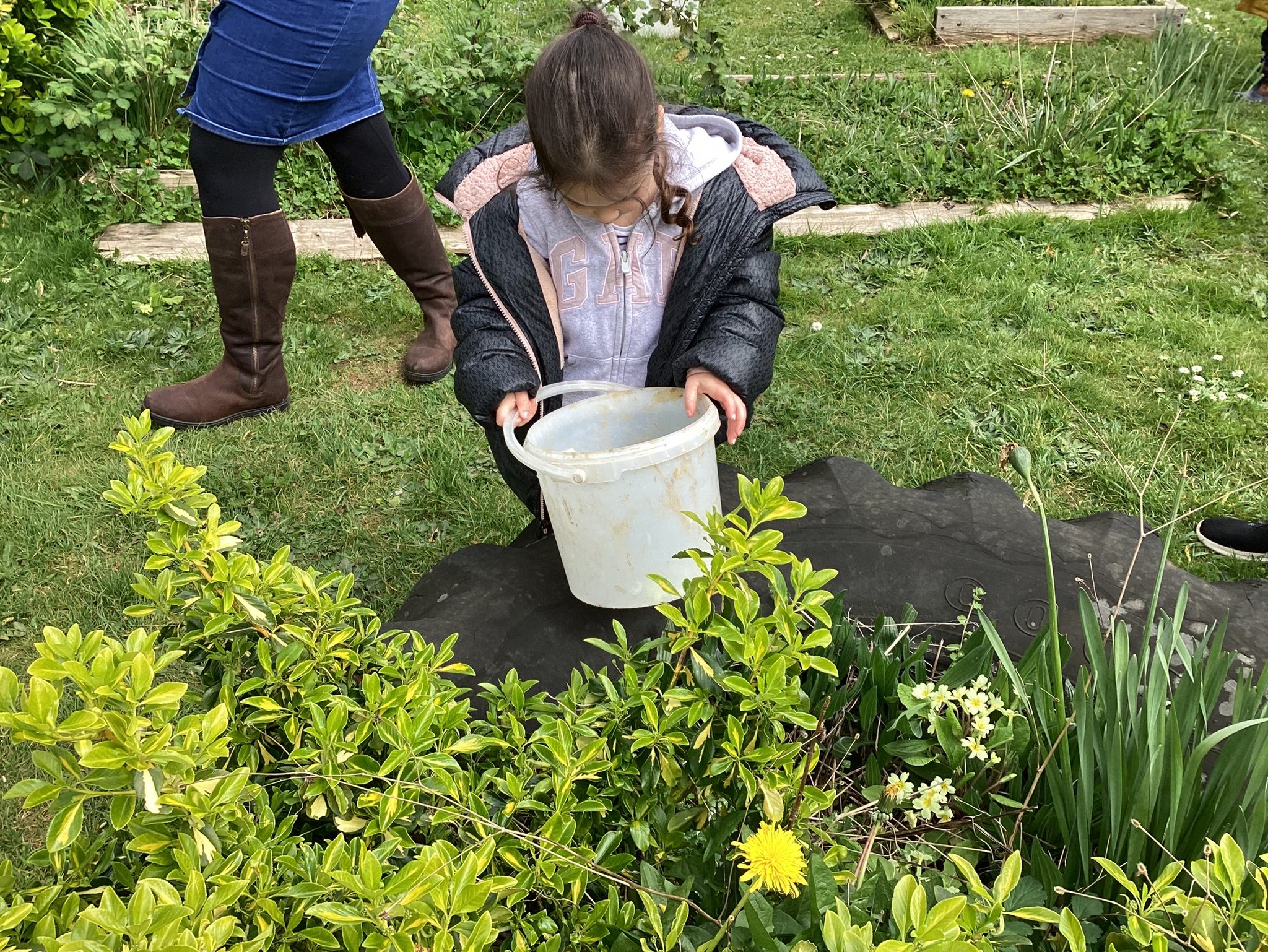The Wild Art Club
A big thank you to all the parents who came, saw and got messy with us. In this post, we want to write about the activities we did to keep you inspired at home.
Leaf hammering
Couldn’t be simpler, collect any leaves and flowers from around the garden or out on a walk (see our simple guide at the end for a few ideas), fold them into a square of fabric or absorbent paper and hammer away!
If you’re trying to find a good hammer, just grab a short branch and whack away. We also like to use palm hammers, you can make your own by sawing off a short section of a branch and rounding off the end with a knife.
Mud/charcoal paint
The trick here is to get the right mixture of the dry material (mud or ground up charcoal) and the water. Too much dry and the paint won’t flow, to much wet you’ve made a puddle which won’t leave a mark when the water has evaporated.
You’ll be surprised how little water you need but it’s really good to let your child experiment and find what works for them. Also mud varies in colour depending on the type of soil you’re on from almost black loam to light brown river bank clay to yellow or even red sand. Keep your eyes on the ground and see what you can find.
If the mud is really dry try grinding it up with a stone or palm hammer first, it will mix with the water more smoothly that way.
Plant dyes
At it’s simplest this is just making a really strong cup of tea with a plant (note: these are not to drink) Collect as much of one plant as possible, put it in a steel saucepan, barely cover with water then bring to the boil. Boil for a few minutes then leave to steep for as long as possible to extract the colour.
You can use any part of the plant to make a dye, the roots, leaves, flowers, fruit and even the bark of trees will make a slightly different colour so just have a play!
For extra points try adding either lemon juice or bicarbonate of soda to the dye to change the colour of the dye. This works best with flower dyes but it will have an effect on all of them.
Two ways of making a paintbrush
1. Hammered brush
To make this simple paintbrush all you will need are a pair of secateurs and a hammer.
Cut a few thin branches; hazel, willow and dogwood work really well. If you’re not sure what kind of tree you have try and find a few different trees and see which works best. Aim for branches that are as wide as your child’s little finger and as long as their hands.
Hold the branch flat against a hard surface
Hammer on the end of the branch until the fibres start to break apart
The more you hammer, the finer the fibres will be. These brushes are perfect for scooping up mud paint but won’t soak up the plant dyes as well, for those we recommend a filled fibre brush.
2. Filled brush
This type of brush will allow you to explore different materials and can be reused so you can find out which fibres work best.
Find a tree with a large, soft pith (centre of the branch). Elder works well but raspberry canes are also a good substitute
Using a thin stick poke the pith into the branch to make a hollow in the branch.
Find fibres that will work as the bristles of the brush. Wool, feathers, moss, dried grass work well, experiment with different arrangements and if something doesn’t work just pull it out and replace with new fibres.
Rules for picking plants
When using any natural materials it’s important to respect the environment and the land. Please don’t pick anything from other peoples gardens or root up any plants without permission. Please make sure that you have identified the plant beyond doubt before picking and using it. Also remember the foraging code:
Don’t pick the first plant you see
Don’t take the last one that’s there
Only take a maximum of a third of what’s there
For a basic list of plants that can be used see the resource list below.
Resources
When picking plants there’s nothing better than a good book to carry with you.
Foraging with Kids – 52 wild edibles. Adele Nozedar. Nourish books
Grow Forage and Make. Alys Fowler. Bloomsbury children’s books
The Thrifty Forager. Alys Fowler. Kyle books
The Forager’s Calendar. John Wright. Profile books
Food for free. Richard Mabey. Collins
Just searching the internet for a plant can provide mixed results, here are a few good websites to use.
Some natural art books and websites.
The Organic Artist. Nick Neddo. Quarry books
The Organic Artist for Kids. Nick Neddo. Quarry books
